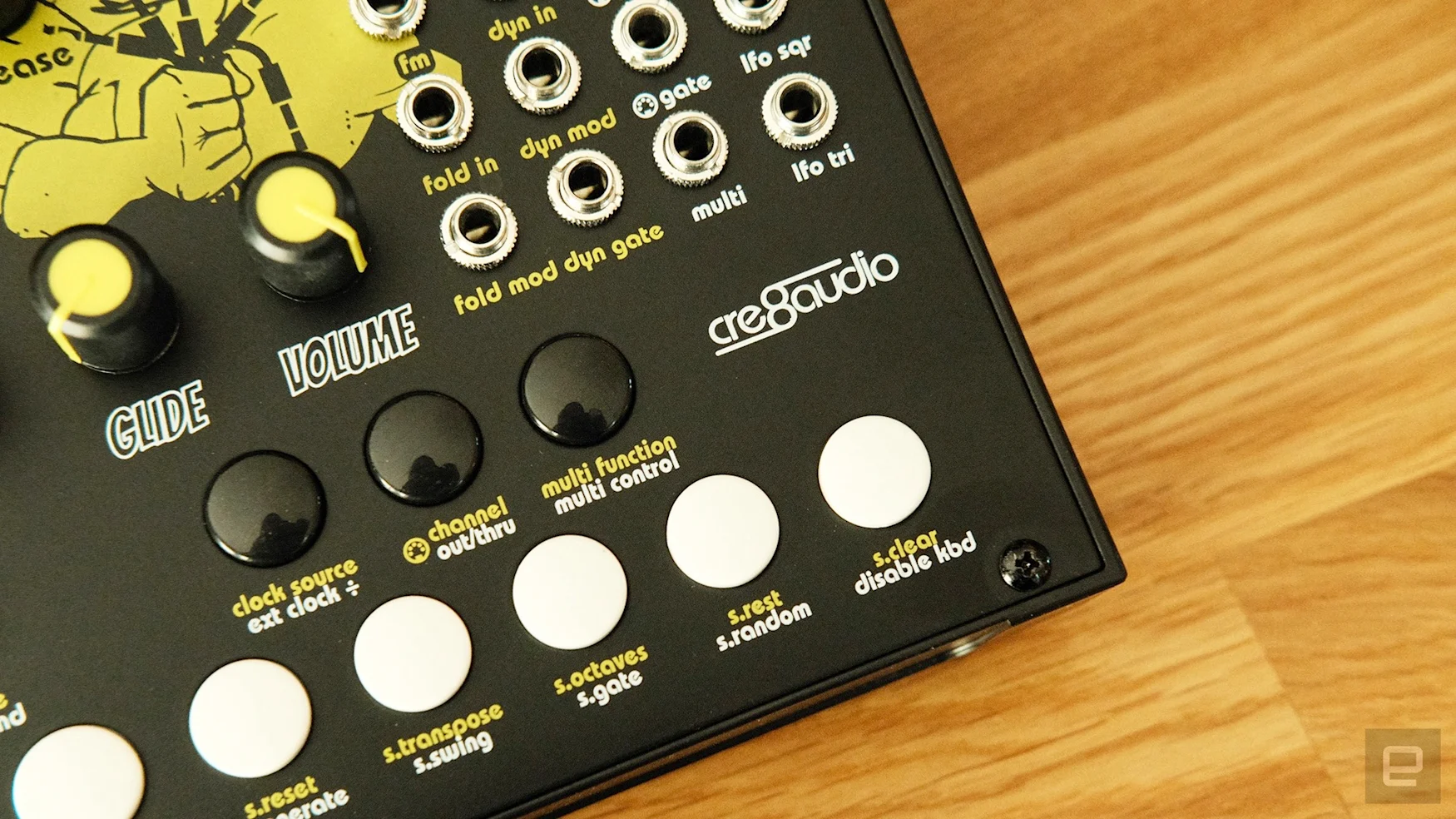Image Credit: Terrence O’Brien / Engadget
The filter is probably the star of the show, by the way. Often it’s what brings the most character to the sound of a synth, and this one delivers. It’s variable state, going from low pass, to band pass to high pass. But it can also combine those in interesting ways. It does acid bass lines and nasal reedy sounds. There’s a reason the filter cutoff knob is about four times larger than all the other controls on the front panel: It’s probably the most powerful tool here for shaping your sound.
Both Cre8Audio and Pittsburgh Modular like to brag that this unique filter has “no dead spots”, that it’s really “all one large sweet spot”, and you know what, they’re probably right. I had a real hard time making this filter sound bad. No matter how much you crank the resonance, in every mode, even with the filter mod set to ludicrous levels, it’s surprisingly musical. It doesn’t self-oscillate, which might be a bummer for some, but it doesn’t bother me too much.
West Pest

Terrence O’Brien / Engadget
The West Pest is sort of like the East Beast’s hippy cousin. It’s a tad strange, and has to do everything a little differently, but it’s no less compelling – just a bit tougher to tame. It has many of the same features and a very similar oscillator, but it trades the variable state filter and ADSR envelope for a lowpass gate and adds a wave folder.
I’d venture to say that, similar to the East Beast, the Pest is most comfortable with bass and plucky leads. But the timbre is completely different. It’s more aggressive and sharp, trading in the creamy goodness of its counterpart for the plasticky weirdness more often associated with Buchla synths.
Because it travels in less familiar territory, it can feel a little harder to make work in an arrangement. But, it can be a more satisfying solo instrument. Both synths have robust randomization features, including randomly cycling through oscillator waveforms and generative sequencing capabilities, but those feel more at home on the West Pest.

Terrence O’Brien / Engadget
Setting the digital mod tool to random, and connecting it to the release mod jack will alter how long notes ring out. Then using the random pattern generator with morphing will play a continuously evolving sequence. And then you can get the oscillator wave to change for every note, giving you something truly unpredictable. Feed that through an epic reverb pedal and you’ve got a custom, soothing soundtrack for working or reading to.
Yes, you could accomplish a similar thing with the East Beast since it has most of the same randomization tools (save the release mod), and it’s probably the more versatile instrument, but I find the results on the West Pest more pleasing. And, honestly, this is one of the ways I often use synths in my studio – passively as a sort of fidget toy or to set a mood while I plug away on editing articles for Engadget.


